Dan Carey – A long talk with the producer who has bossed 2019
"It’s just about the immediacy and the unfussiness of it"
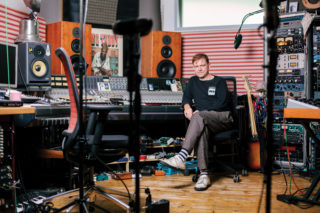
"It’s just about the immediacy and the unfussiness of it"
It’s an early start in Streatham. As the dust of 2019 starts to settle for most of us, Dan Carey has his head in a fresh decade’s worth of projects, starting with a new Goat Girl album scheduled for release some time next year. He walks around the studio with a homely excitement, telling me about the different direction they’re taking with it, more based around electronics, but still recording it predominantly live.
The sun is rising outside against a so-marketed traditional Neapolitan pizza restaurant, a big Just Eat sign glaring opposite a local garage already thick with noise. Posters in a neighbouring shop I at first mistake for his studio advertise an RGA 10 Mass Spectrometer and a Pumping Trolley, with a couple of light-up reindeers grazing on the carpet at least a couple of weeks too early. Gentrification is coming slowly to South London, even if the pub across the road has more letters of its name scratched out than not.
Dan Carey has been the common thread behind many of the last decade’s most vital debut releases – Fontaines D.C., black midi, Squid, Kate Tempest. He’s also had a Top 10 hit with Kylie Minogue, but we don’t mention that. His own label, Speedy Wunderground, is a haven of chaos, free from protocol and rules, other than the ten very strict ones figuratively pinned to the wall. Writing, recording, mixing and mastering will be done in 24 hours without a lunch break. All recording sessions will be a live take recorded in the dark with smoke and lazers, and somewhere on each record the Swarmatron will make an appearance.
The studio itself is tucked away behind a residential gate, with a laminated sheet of baby pink paper requesting that you keep it closed at all times. A few hundred delay pedals are boxed underneath an array of synths and mixing desks with the kind of chaos befitting the living, breathing music he helps create. An Everyman book of Leonard Cohen poetry lies next to him, bookmarked in the middle by a piece of string. He lives upstairs, which gives him a free pass to make as much noise as he likes.
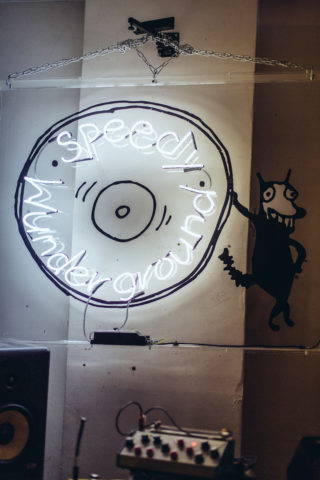
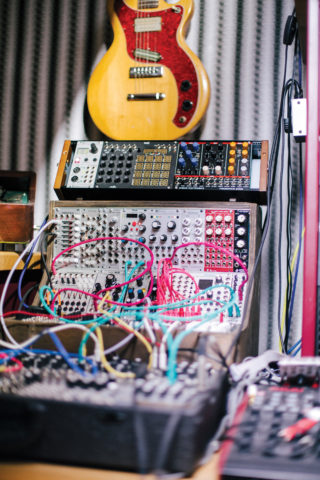
How long have you been in this space? You were in Brixton before. It feels so anomalous, that this space should exist so secretly in the middle of Streatham.
About ten years, twelve years. Quite a while. I’m really happy with it at the moment. I periodically move stuff around and redesign it. Up until about a year ago it was really weird, there was a big table coming out here which sort of cut the room in half [he gestures the shape of a rectangle in front of the swivel chair he’s sitting back on]. It felt a bit more claustrophobic, almost like I was hiding in this cave with all this gear really high up around me. You couldn’t see over anything; it was kind of cool. But then I thought this year to change it around so that everyone is kind of in the same space all the time.
In most photographs you see from sessions of bands recording in bigger studios, you kind of get used to seeing the musicians hiding behind this darkened mirror, and everything completely separated off.
Yeah, I hate that. I hate it. I’ve always felt really uncomfortable on either side of that glass. You know, if I’m playing and talking to someone, someone else will think you’re talking to them and you can’t hear them. It’s so unconducive to playing, whereas I think if everyone’s experiencing the same thing, it’s good.
Does it ever get a bit crowded? Some of the artists you’re recording have quite a full set-up. How is it having everyone active in the same space?
Yeah, it’s brilliant. It’s not too small if you think about it, you know, the most you’re likely to have is someone on drums, bass, maybe a guitar there and another guitar there [he gets up, imagining the next band to inhabit the space], maybe some keys there or there, and then I’m here. Then Lex, the engineer, sometimes he’s in here, or if we’re recording on tape he’ll be out in the back room. It’s never crowded. I mean, it is crowded, but in a fun way.
When I first met Fontaines D.C., it was really funny – they really wanted me to do their record and I came to see them, got on with them really well and was like “yeah, let’s go.” But they really wanted to do it in a big studio. I was like “no, I really think you should do it at mine” and they were like “no, we really want to do it somewhere big.” I’ve got all my gear here, so it takes ages to move it out, and I was saying to them “just come round and have a look – it’s quite big, you know.” Anyway, they came round and were like “oh my god, yeah, this is amazing” and we did it here and it was fine. After I finished it I asked them why they were so keen to do it somewhere else, and they said that they’d seen a picture of it – I think it might have been on the Speedy Wunderground website, where I’d purposefully put everything on the floor in the middle of the room just to make it look kind of chaotic for a joke. But they didn’t think they’d have anywhere to stand. Maybe I need to get an estate agent round.
What was it like when you first heard Dogrel?
Even from a few seconds of watching them on video, you could just see that this is a fucking cool band. I just loved it straight away. I went and saw them at the Five Bells, and yeah I couldn’t believe it. It was so confrontational, slightly frightening, and then I met them afterwards and I think we pretty much decided we wanted to work together in one conversation. They wanted to get the energy into the record that their live performances had. I suggested to them that the feeling of power from watching the live show is partly volume, but also that it’s unstoppable, you can’t go back and do bits again. There’s tension there.
Normally if you’re recording, you can track everything separately – put drums down, put bass down – that gives you so much room to go in and it’s harder to get a connection between everything. The next step is to record it all together as a band. It’s a trade off because someone might make a mistake, you might have to do it again. But then just to extend that whole thought, we said why don’t we divide the record into chunks. We’ll record four songs to tape, and if there’s a mistake in the third we’ll just start over and wipe the tape.
How many times did you have to wipe the tape?
Not very many. I think only once or twice. Because obviously to make that work you need to be well rehearsed. I didn’t want to do the vocals live, I really saw his lyrics as something that needed to be separated from the music. I wanted it to sound like the band playing live at full level, really hard and loud, but the vocal was almost like someone – say, you’re watching the band there, and then someone’s next to you whispering in your ear.
It meant that they had to learn the songs instrumentally without there being a guide vocal or anything. That sounds easy, but so many of the songs have these long bits of groove just repeating. I went out to Dublin to their rehearsal room to have a listen halfway through, and yeah, I couldn’t believe that they had it down so perfectly. When they came here they were so well practiced, so we added in a few new pedals and amps and guitars to inject it with a bit of confusion again. We connected together their guitar outputs and put them through a separate amp that was like a sixth member of the band just kind of going crazy in the corner. There was enough unexpected stuff happening that it never felt over-practiced.
Grian Chatten’s quite a percussive vocalist as well, it’s an interesting idea to make the band unlearn his pace. You watch them live and they’ll catch up with him, or slow down, based on his delivery. I guess it’s similar with Sinead O’Brien, who you’ve also recorded this year.
We actually tried something really strange on that – it was an experiment, it didn’t work actually but it’s an indication of what we were trying to do – we recorded the instrumental and then we recorded her doing the vocals, so in her headphones she could hear the instrumental, but then I faded it down so she couldn’t hear anything, and it was just free time. That was something we did with Kate Tempest and Rick Rubin. Rick had been trying get us to break the rhythmic connection between the music and the lyrics so that the lyric would work on its own time and not have to be locked into the music. It took us four years to work out what he meant. He never just said “don’t rap to the beat.” I thought a similar thing might work for Sinead, but I think it’s quite good practice to train your brain that the lyrics don’t have to be bossed around by the music.
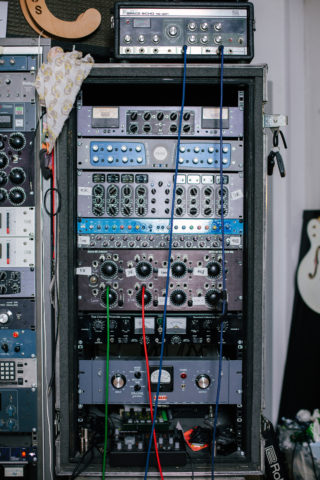
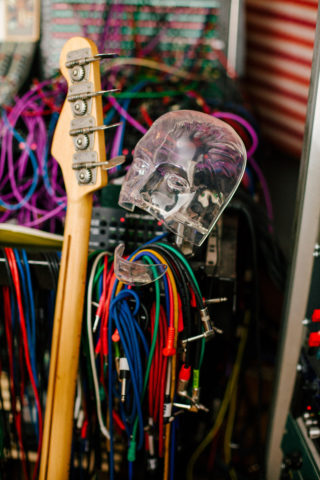
How did the label Speedy Wunderground start? Was it meant to be a place for these kind of experiments?
I had this phase of slightly frustrating experiences. I was doing a lot for major labels: having a great session, recording something and then finishing it, sending it to the label and getting it straight back asking if I could make this louder or that quieter. I was grumbling about that a lot, and then when it was finished, the song kind of just goes away and pops up nine months later. And while it’s kind of nice to hear it when you’ve forgotten about it, I’d just watched some documentary of London in the 1960s, and Joe Meek who would record and cut a record, and the next day it would be on the radio. I thought that was so cool, and I really wished life was still like that.
Speedy Wunderground was never meant to be that serious a thing, we just set up some system where once a month I could get together with some people – usually people I was already working with – and we’d record on Friday and I’d master it on Saturday and it’d be done. One of the central ideas was that – once the track’s finished – there’s an agreement that no one can hear it until it comes out. There’s no temptation to fiddle with it. I don’t stick to it so rigidly these days as we’re taking things a bit more seriously, but the first few releases were really funny. We’d mix it, do the remix, send it off and then I’d delete all the files from my computer. Then it’d come back on vinyl.
So you’re not sticking to the 24 hours without a lunchbreak anymore?
No, all of that’s still there. It’s rarely even 24 hours anymore, you know, we did the second Tiña last week in about six or seven hours. It’s just about the immediacy and the unfussiness of it. There’s always a bit in the record that, if I had another go at mixing it, I might change, but sometimes those bits become your favourite things.
Have you ever ended the 24-hour period with something completely unworkable?
Yeah [he laughs], there was only one, but I’m not going to say who because he’d be so gutted. There was one session that we did that was just a big mistake. We did it, we kind of liked it and then the next day I called him and he called me and we both said “yeah, let’s not do this.”
What was it about it?
[He carries on laughing] I’m not telling you. It was a cover, and I don’t think it was a great choice of cover. But that’s the only one.
On the opposite side to that – have there been any you’ve recorded where you’ve wished your own restrictions weren’t there?
That’s an interesting question. Not really. I think when I wish that I’d had more time with that person or that band we normally just end up doing an album together. Sinead O’Brien’s a good example. We just did that one song but next week we’re going to do an EP, and Squid obviously, and Black Midi, Black Country, New Road. The ones that feel really good tend to develop into something else.
The Squid EP was the first EP that Speedy has done. It sounds massive. How was that experience?
Yeah, it was so much fun. They’re such amazing people to work with, very democratic and all very intelligent musicians, so all of the ideas are going to be worth listening to. We really wanted to do an album with them. It’s funny actually, because we helped build their profile up with the Speedy thing, and we did ‘Houseplants’ as a sort of favour to them. And then it gets to doing an album, but everyone wants to do an album with them and we can’t really compete. I feel like I’ve made the perfect model for shooting myself in the foot. Help make something on peoples’ radar, and then yeah. I’m really pleased for them, though.
What do you think it is about the set-up here that’s getting these bands so much traction?
I don’t know, I think it kind of works both ways. I think the artists that have helped the label gain momentum a little bit all have a similar musical thread, so it’s easier for me to imagine something and how it might come out if we gave it the same attention.
I’m just trying to think of something that we haven’t… Do you know that band deathcrash? They’re different from the bands we were just talking about, much less aggressive but still very weird and dark. I think being able to see how things have unfolded with the bands we’ve already worked with, if I hear a demo I can now see how it might go. That’s one theory. Another possible reason for it is, because of the attention that the last four or five singles have gained – the stuff that gets sent to us seems a bit more focused, there’s a bit more of a certainty.
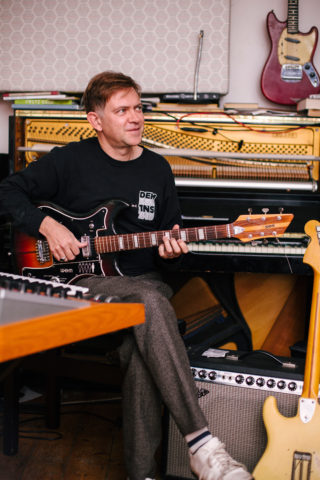
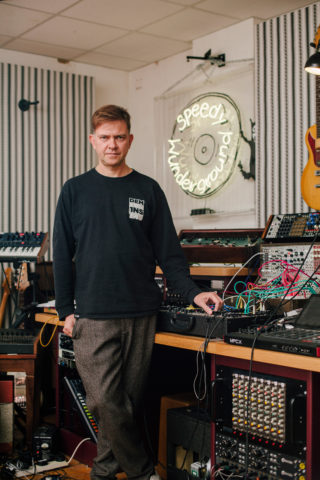
One of the rules of Speedy Wunderground is that 250 copies of each release gets pressed on 7” vinyl. Is there a mystique you’re trying to hold onto? I guess when you’re recording Steve Mason or Loyle Carner, you know they’re going to have an audience that will outsell that tenfold. But then you brought up Joe Meek earlier, the number of rare Freakbeat singles that are in existence somewhere – the excitement that might come from finding an old Jason Eddy and the Centremen 7”, or something – is that feeling something you’re actively trying to uphold?
Definitely. Because I think it’s nice to be reminded that music is a physical thing. Obviously, it exists in your mind really. But I just like the idea of there being 250 copies of something. And even though we do some of them digitally, they sound completely different. They sound weird. There’s a nice game to it. It’s frustrating on one level. There’s one of the records even – the Loyle Carner and Kate Tempest one – that I haven’t got a copy of. There just aren’t any left. If I wanted a copy of it, I’d have to pay about £200 on eBay and that’s kind of annoying. But at the same time it’s quite satisfying.
How did you let all of them go?
I always keep a few back, but then you might have a party round here and everyone will be like “oh do you have one of those Kate Tempest ones around here?” and you’ll be like “yeaaaah!”
What kind of thing is it that you’re looking for when you get sent possible new music to record?
It’s different things. I guess it’s pretty simple. If the demo makes me want to play it over and over again. I do get sent a lot that I think is really good, but I might not be inclined to keep playing it. But then it’s more subtle than that. Sometimes I’d get a demo and I don’t really like the song but there’s something about the music that maybe I’d like to work with. Have you heard the latest one, by Pynch? That was the perfect example of something I wasn’t looking for. Spencer [Enock] sent over a demo while I was away, and I was just wandering around Berlin with the song stuck in my head, thinking about it in terms of Fleetwood Mac, which is so far removed from anything we’ve intended to put out on the label. I really like that.
On the subject of things far removed to the Speedy philosophy. How was going out to Shangri-La to record Kate Tempest’s latest album with Rick Rubin? It’s quite famously this space that seems to espouse the exact things that Speedy’s working against.
Yeah, I mean it’s a different world. But it’s amazing. There’s something completely magical about that place. We’d been there a couple of years before, he’d invited us over in 2015 when we were at SXSW. He’d heard Kate doing Brand New Ancients poetry, and then the first album we did together, Everybody Down. I think that he wanted her to be doing something with music – more like a record than poetry – but then he preferred her voice when she wasn’t rapping. He had more of an emotional connection to the music when she was speaking at her own pace, so when he heard the album I think he was like “why are yu all-ways tor-king like that?” [he says, mimicking the rhythm of Kate’s South London accent].
He told us to think about Leonard Cohen and Neil Young and stuff. We’d prepared a little bit before we went. We thought he didn’t want to do anything with beats so we just brought an acoustic guitar. But we’d made the mistake of thinking that if you don’t have drums then it’s still okay to rap over guitar. We were missing the point. He’d just come in, say “hmm, that’s not really what I was getting at”, and then just leave, and we thought he hated us. Then suddenly we did this thing where we didn’t record the music and words together, and it really opened it up. He asked us to go away and write a record like that. But we didn’t, because we already had most of Let Them Eat Chaos and wanted to explore that thing. He was so cool, and just said that once we’d done that, we should come back and then do what he said.
That was a long way of saying that when we came to Shangri-La this time we felt very at home. We knew the people and the lay of the land a bit. But it’s amazing. Here is obviously… I mean, I live upstairs. Me and Kate have written everything here, so it’s quite good to be suddenly put into a situation where you’re terrified. For anyone who hasn’t stood in a room playing Rick Rubin a full album, it’s really fucking frightening. But he’s only frightening because of who he is. He’s not acting frightening.
Did you steal anything from the studio to take back here as a memento?
I think I took a phone charger by accident the first time, but I took it back the next year. It was useless because it was for an American plug. So I couldn’t even charge my phone on it. It’s funny actually, he’d labelled all of the instruments in the studio with his own name. Like, you’d walk in and there’s just a Mellotron that says “Rick Rubin” on it.
Did you all have to be barefooted?
It kind of comes naturally, yeah. It’s quite different from Streatham. If you want a little break you can just go and lie on the grass outside and look at the sea. It’s also amazing because all of the engineers and assistants are all great musicians and producers. After work’s finished for the day, everyone has dinner and then goes into studios and starts jamming. We had some great psych jams in one of the rooms, and then we’d get a few guitars and just play until 1 or 2 in the morning. Then someone would take a recording of what we’d just done and turn it into some amazing trap beat.
When you took ‘People’s Faces’ back to Streatham, what did you want to draw out of that version?
I just wanted something with more of a rhythmic element to it really. When we’d originally thought of that song, we’d always imagined it with a big production, and then it just settled as this piano ballad. With the first round of demos before going out to Shangri-La, we’d tried putting strings on it, drums and everything, and we’d basically decided that we were wrong, as nothing was working other than piano. People seemed to really like it when the album came out, but radio more or less refused to play it because it was so simple.
That moment was one of the standouts at this year’s End of the Road festival, when Kate played ‘People’s Faces’ and no one had really realised how affected they’d been by the set until that point.
And everyone was crying weren’t they?
Simultaneously. Even if they’d never heard it before.
It’s weird, isn’t it?
—
In the corner of the studio, a neon white light reproduction of the Speedy logo – grinning wolf leaning against hand-drawn vinyl – casts a slight shadow on the room. I mean to ask him who the wolf is on at least three occasions, but every time something more interesting comes up. Each year, the label distills its 7” output into a yearbook-like compilation album.
—
How’s this year’s compilation come along?
It’s my favourite one we’ve done. Just in the progress that the label’s made. I really like all of the others but by their very nature they sound like slightly random collections of things. You know, the whole idea of it being spontaneous and seeing who’s around on Friday…
I guess the first time Childhood and Kate Tempest have shared an album.
Probably the last time too. But I think this one has more of a thread running through it. And I suppose it’s quite a dark sounding record, but this is pretty nasty time. So it seems fair enough.
How often do you find people come into this 24-hour haven and try and write/record something completely unlike anything they’ve done before?
You do find that. All We Are and Alex Kapranos is the main one that comes to mind – they came in with absolutely nothing at the start of the day, but Alex had this amazing writing process. We came up with the idea for the instrumental track quite quickly, and then Alex got a notepad and went round the room making us quick fire give him a line. Not like a line from a song, but like, “I’ll never make it to five!” You know, and it was so quick that you didn’t have time to think about it, he’d just yell “You! You!” and then wrote them all down.
It was slightly embarrassing at first. Lex didn’t think he was going to be involved as he was engineering, and then Alex pointed at him – “Lex!” Lex said “I didn’t think I was going to be involved in this”, And that’s what he wrote down. And so we had these pages of like, “blow the top off! Get onto the beach!” And then he said “right, we’re going out for lunch”, and we went out for lunch and he gave everyone a notepad and the conversation took so many weird turns. We were talking about death and pain and like, whether if you experience extreme pain but if something causes you to forget that pain, did it really exist? Is a sensation that there’s no memory of still a sensation? When we came back here, he took all the notebooks and typed them up into his laptop. I printed them out and he cut them all up with scissors and there were lines everywhere and this song kind of came out. It was really good fun. We put a mic down in the middle of the room and everyone had to have a go at singing it.
Kind of like fridge magnet poetry.
Exactly.
—
At the beginning of December, the art collective TMBFY (This must be for you) hosted a “disappearing exhibition”, with 15 Speedy Wunderground singles reproduced with new and unique artwork from other Speedy artists, which will then be raffled out for free, for charity.
—
Do you know which release you’ve been assigned?
I’ve already done it [he clambers up from his chair to find and open an envelope with his new artwork inside]. I’m doing black midi. It’s a negative of a flame. I nearly set fire to the studio. I made a camera obscura, got a big sheet of cardboard and put the lens there. Got all the chemicals needed for developing film and then set fire to things just here [he points, literally, at the middle of his studio].
What I found is that it’s really hard to set fire to small wooden things. Because I had this little house, and I thought it’d look really cool if it was on fire. And it just didn’t really burn. Even little cardboard things didn’t really burn. So I got this, not lighter fuel, but tape head cleaner, squirted it on, and obviously spilt some and lit this – whatever it was – and it just went vooooom. So that was pretty worrying.
It’s ok. I’m probably exaggerating a bit, I had it under control. Yeah, so in the end, I’d ran out of things to burn, so this was just a little glass jar with some lighter fuel on fire. But Geordie [Greep, black midi] had this thing where he wanted to call the album Hell Fire. Throughout recording the whole album, he had this period where the only thing he’d say was “Hell Fire”.